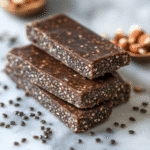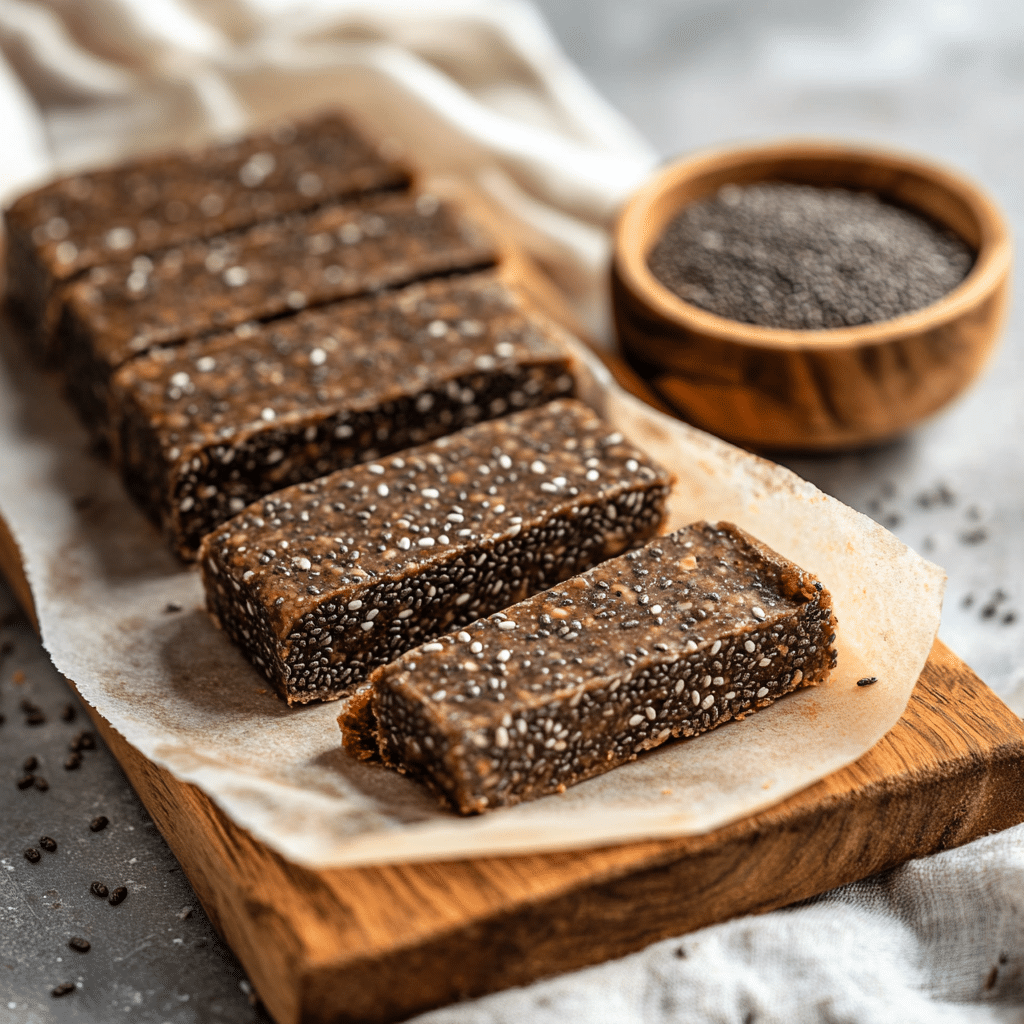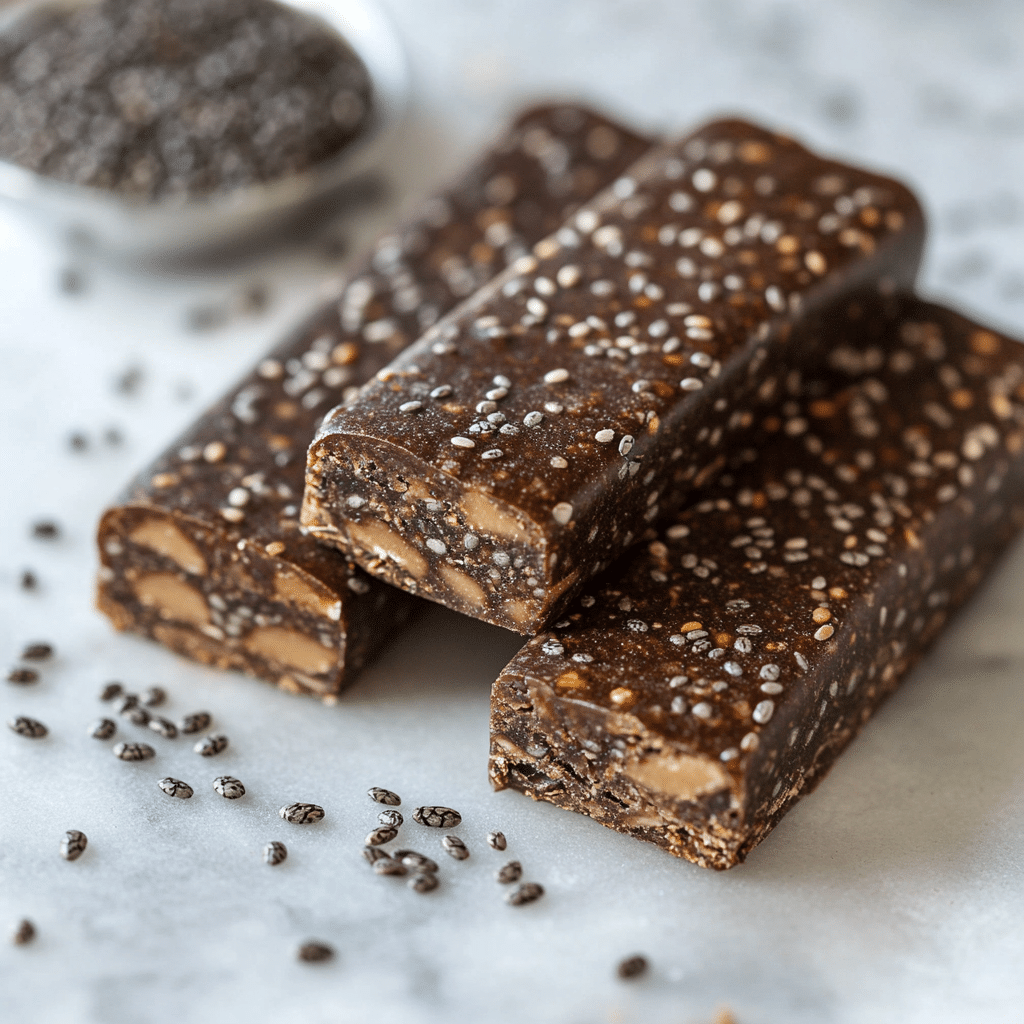Sugar free protein bars are quickly becoming a go-to snack for anyone who wants fuel without the sugar crash. Whether you’re managing diabetes, cutting back on carbs, or just want a cleaner way to snack, these bars offer powerful nutrition in every bite. But not all options are created equal. Many store-bought brands still sneak in hidden sugars or questionable fillers. That’s why more people are turning to DIY versions that taste better and cost less. In this article, you’ll learn how sugar free protein bars work, what makes them hold together, how to save money, and how fun twists like sugar free rice krispie bars add variety.
In this post

Sugar Free Protein Bars That Actually Taste Good
- Total Time: 10 minutes
- Yield: 8 bars 1x
Description
Chewy, satisfying sugar free protein bars you can make in minutes—perfect for snacking or pre-workout fuel.
Ingredients
1 cup almond butter
1/2 cup vanilla whey protein
1/4 cup coconut flour
2 tbsp chia seeds
1/3 cup allulose or monk fruit syrup
1/4 tsp sea salt
Instructions
1. Mix almond butter and syrup in a bowl.
2. Add protein powder, coconut flour, chia seeds, and salt.
3. Stir until a thick dough forms.
4. Press into a lined 8×8 tray.
5. Chill for 2 hours.
6. Cut into bars and enjoy.
Notes
Store in fridge for up to 7 days.
Can be frozen for 1 month.
Customize with cocoa, nuts, or sugar-free chocolate chips.
- Prep Time: 10 minutes
- Cook Time: 0 minutes
- Category: Snacks
- Method: No-Bake
- Cuisine: American
Nutrition
- Serving Size: 1 bar
- Calories: 160
- Sugar: 0g
- Sodium: 55mg
- Fat: 12g
- Saturated Fat: 3g
- Unsaturated Fat: 8g
- Trans Fat: 0g
- Carbohydrates: 5g
- Fiber: 3g
- Protein: 10g
- Cholesterol: 5mg
Sugar Free Protein Bars and Why They Matter
Why make your own sugar free protein bars?
I still remember the moment I realized something was off. I’d just bought a so-called healthy bar that proudly claimed to be “no sugar added.” One bite in, and I felt that all-too-familiar spike in energy, followed by the crash. A peek at the label revealed sneaky ingredients like maltitol and brown rice syrup—both technically sugar-free, yet still capable of raising blood sugar. That’s when I committed to making my own sugar free protein bars.
The biggest benefit? You control everything—from protein type and sweetness level to the exact macros. Many commercial options rely on fillers and artificial sweeteners that leave a chemical aftertaste or cause digestive upset. Homemade bars give you the power to skip all that.
A great sugar free protein bar isn’t just about taste—it’s a balanced combination of protein, fiber, and healthy fats. That combo keeps you full longer and helps stabilize blood sugar levels. Some of my favorite base ingredients include almond flour, whey isolate, and monk fruit sweetener. Bonus: they’re cheaper in the long run.
You don’t need to be a professional chef to pull it off. Most recipes come together in 10 minutes with ingredients from your pantry. Even better, you can create fun add-ins like crushed nuts, unsweetened coconut flakes, or even cocoa nibs. Plus, with recipes like my Sugar free brownies, you skip the oven completely.
What makes sugar free protein bars stick together?
One of the most common questions I get is: “How do you make them hold their shape without honey or dates?” The answer is simple—it’s all about using a binder that adds moisture without sugar. Nut butters, protein powders, and sugar-free syrups like allulose or fiber syrup are terrific choices.
Protein powder acts like glue when mixed with moisture. Combine it with creamy almond butter or coconut oil, and you’ve got a texture that’s dense yet chewy. For structure, I also love using seeds—chia or flax—because they expand and gel slightly when mixed with liquids.
Another trick is to refrigerate the mixture. Letting your bars chill for a few hours helps them firm up naturally without the need for added sugars or starches. This step is especially important when making sugar free rice krispie bars, which tend to crumble if you skip the cooling stage.
If you’re new to sugar-free baking, start with basic recipes like my Chocolate chip banana oatmeal bars before diving into more experimental combos.
Cost-Effective and Clean – Making Sugar Free Protein Bars at Home
Is it cheaper to make your own protein bars?
Absolutely—and not just by a little. Making your own sugar free protein bars at home can cut your cost by more than half compared to name brands. A single bar from the store can run you $2–$4, especially if it’s labeled keto, paleo, or vegan. But if you stock up on basics like protein powder, unsweetened nut butter, and sugar-free sweeteners, you’ll be able to whip up 10–12 bars for the price of two.
Here’s a quick cost comparison table to break it down:
| Item | Store-Bought (Per Bar) | Homemade (Per Bar) |
|---|---|---|
| Protein | $1.50 | $0.45 |
| Sweetener | $0.50 | $0.10 |
| Total Cost | $2.00–$4.00 | $0.70–$1.00 |
Plus, when you make your own, there’s no compromise. You skip the preservatives, artificial flavors, and surprise ingredients. And you get to experiment with flavors. For example, I love using vanilla protein powder in my no-bake cinnamon bars, which pair perfectly with sugar-free maple syrup and chopped walnuts.
What is the best protein bar with the least sugar?
The best sugar free protein bars don’t just eliminate sugar—they deliver real satisfaction. That means at least 10–15 grams of high-quality protein, under 2 grams of sugar, and fiber to support digestion. But even among sugar-free bars, there’s a big difference between what’s marketed well and what’s actually healthy.
The key is reading the ingredient list. Look for protein sources like whey isolate, pea protein, or egg white powder. Avoid ingredients like maltitol or sorbitol, which may spike blood sugar or cause bloating. Many brands cut corners here.
Or better yet, make your own. One of my favorite variations is sugar free rice krispie bars made with crispy protein cereal, nut butter, and zero-sugar marshmallow-style syrup. They’re kid-approved and adult-satisfying.
Hidden Sugars and What to Watch Out For
What is the hidden sugar in protein bars?
If you’ve ever flipped over a “sugar free” bar and felt confused by the ingredient list, you’re not alone. Brands get sneaky by using alternative sweeteners that technically don’t count as “sugar” but still spike your blood sugar or cause cravings. These are often labeled as maltitol, brown rice syrup, agave nectar, glycerin, or isomalto-oligosaccharides (IMOs).
Many of these ingredients are high glycemic, meaning they can raise blood sugar similarly to regular table sugar. That defeats the whole purpose of eating sugar free protein bars, especially for people managing insulin resistance or diabetes.
What’s more frustrating is how brands label these as “net carbs” by subtracting fiber or sugar alcohols, giving a false sense of security. It’s why I always recommend checking the actual ingredient list—not just the label claims.
When I started my sugar-free journey, I fell for the trap too. I remember buying a “zero sugar” protein snack, only to feel lightheaded an hour later. That’s when I dug deeper, learned about glycemic indexes, and started making my own bars using clean ingredients like stevia, monk fruit, or allulose.
You can avoid this issue altogether with recipes like my no sugar Cookie dough protein bars, which are completely free of hidden sugars and made with only whole-food ingredients.
What is the best sugar-free protein?
Finding the best sugar-free protein comes down to purity and digestibility. Whey protein isolate is one of the cleanest options—it’s low in lactose, highly bioavailable, and easy to mix. If you prefer plant-based, go for pea or rice protein blends with no added sugars, gums, or flavors.
Some protein powders—even “natural” ones—contain sweeteners like sucralose or acesulfame potassium. These may be calorie-free, but they can still affect insulin response or gut health. Look for unsweetened versions and add your own sweeteners if needed.
When I’m making sugar free protein bars, I often use unflavored whey or a plain vegan blend and flavor it with vanilla extract, cinnamon, or cocoa powder. This gives me full control over the taste without any weird aftertaste.
Need a creative twist? Try folding your favorite sugar-free protein into sugar free rice krispie bars for a nostalgic yet nourishing snack. It’s proof that going sugar free doesn’t mean giving up joy.
Structure, Texture, and Smart Sugar-Free Swaps
What makes protein bars stick together?
One of the most misunderstood parts of making sugar free protein bars is figuring out what binds them without the help of honey, dates, or syrup. Luckily, there are smart, sugar-free ways to make everything hold—without ending up with a crumbly mess.
Here’s what really works:
- Nut butters like almond or peanut butter are naturally sticky and packed with healthy fats.
- Coconut oil firms up when chilled, helping bars set properly.
- Allulose syrup or fiber syrup (like chicory root or tapioca fiber) mimics the sticky texture of honey—without the sugar spike.
- Protein powder itself thickens mixtures when combined with liquid.
For extra stability, many recipes call for refrigeration or freezing. This helps your bars set without needing added binders. For example, when making sugar free rice krispie bars, I use a mix of sugar-free marshmallow syrup and creamy almond butter to achieve that classic chewy-crisp texture.
You can also get creative with add-ins like unsweetened coconut, chia seeds, or ground flax. These not only boost nutrition but absorb moisture and contribute to a firm, satisfying bite. If you’re interested in low-carb options, check out my Cottage cheese brownies, which hold together beautifully with just a few pantry staples.
Texture tips: chewy, soft, or crunchy?

The beauty of homemade sugar free protein bars is customization. Want something chewy? Go heavy on nut butter and fiber syrup. Prefer a crunch? Add slivered almonds or puffed quinoa. Need something soft and smooth? Use coconut flour or blended oats to create that cookie-dough feel.
One trick I love is to pulse ingredients together just enough—over-blending can make them too dense. Another tip: taste the mixture before chilling it. You can always adjust sweetness or texture before it sets.
Also, don’t underestimate how important chilling time is. Letting your bars rest in the fridge for 2–3 hours gives everything time to firm up naturally. This is especially important when you’re making recipes like my sugar free rice krispie bars, which rely on that cool-down period for the perfect bite.
FAQs About Sugar Free Protein Bars
How do protein bars have no sugar?
Sugar free protein bars avoid added sugar by using low-glycemic or calorie-free alternatives like stevia, monk fruit, erythritol, or allulose. Instead of syrups or cane sugar, these bars rely on natural binders like nut butters and fiber syrups that offer sweetness without the crash. Some versions even skip sweeteners altogether, using cocoa, cinnamon, or vanilla for flavor depth.
What makes protein bars stick together?
In sugar free recipes, sticky ingredients like nut butter, coconut oil, and sugar-free fiber syrups hold the bar together. Protein powder also absorbs moisture and firms up during chilling. For added structure, ingredients like chia seeds or almond flour act as natural binders. These options help your sugar free protein bars stay firm without traditional sugars.
Is it cheaper to make your own protein bars?
Yes—homemade sugar free protein bars cost significantly less. A store-bought bar can run you $2–$4, while a homemade version often costs under $1. Bulk-buying essentials like protein powder, unsweetened nut butter, and zero-sugar sweeteners lowers your cost and eliminates fillers, preservatives, and hidden sugars.
What is the best protein bar with the least sugar?
The best bars contain clean ingredients, at least 10g of protein, and under 2g of sugar. Look for ones with no artificial sweeteners or sugar alcohols like maltitol. Better yet, make your own—try recipes like sugar free rice krispie bars or no-bake protein squares for full control over ingredients and flavor.
What is the hidden sugar in protein bars?
Hidden sugars go by names like brown rice syrup, maltitol, agave, and glycerin. These may not appear as “sugar” on the label but still spike blood sugar or trigger cravings. Always read the ingredient list—not just the nutrition label—when buying bars. Making your own eliminates these sneaky ingredients.
What is the best sugar-free protein?
The best sugar-free protein options are whey isolate, pea protein, and egg white powder—unsweetened and free from additives. These offer high bioavailability and clean flavor, making them ideal for homemade sugar free protein bars. Choose unflavored versions and sweeten them naturally to avoid artificial aftertaste.
Conclusion
Sugar free protein bars aren’t just a trend—they’re a smart, satisfying solution for anyone wanting high-protein fuel without blood sugar spikes. Whether you’re managing your macros, avoiding hidden sugars, or simply want better control over what goes into your snacks, homemade bars check every box.
From understanding what makes them stick, to recognizing cost savings, and avoiding tricky ingredients, creating your own bars is empowering and fun. And if you’re feeling nostalgic? Sugar free rice krispie bars offer the perfect crunch without compromise.
So the next time you reach for a “healthy” snack at the store, remember—you can do better. With a few ingredients and a little prep time, you’ll have a batch of protein-packed, sugar-free goodness ready whenever hunger strikes.
Follow No Sugar Bakes on Facebook for easy, wholesome recipes that support a balanced, sugar-free lifestyle.
Discover more feel-good, sugar-free recipes on Pinterest at No Sugar Bakes and bring healthy sweetness into your everyday routine!

